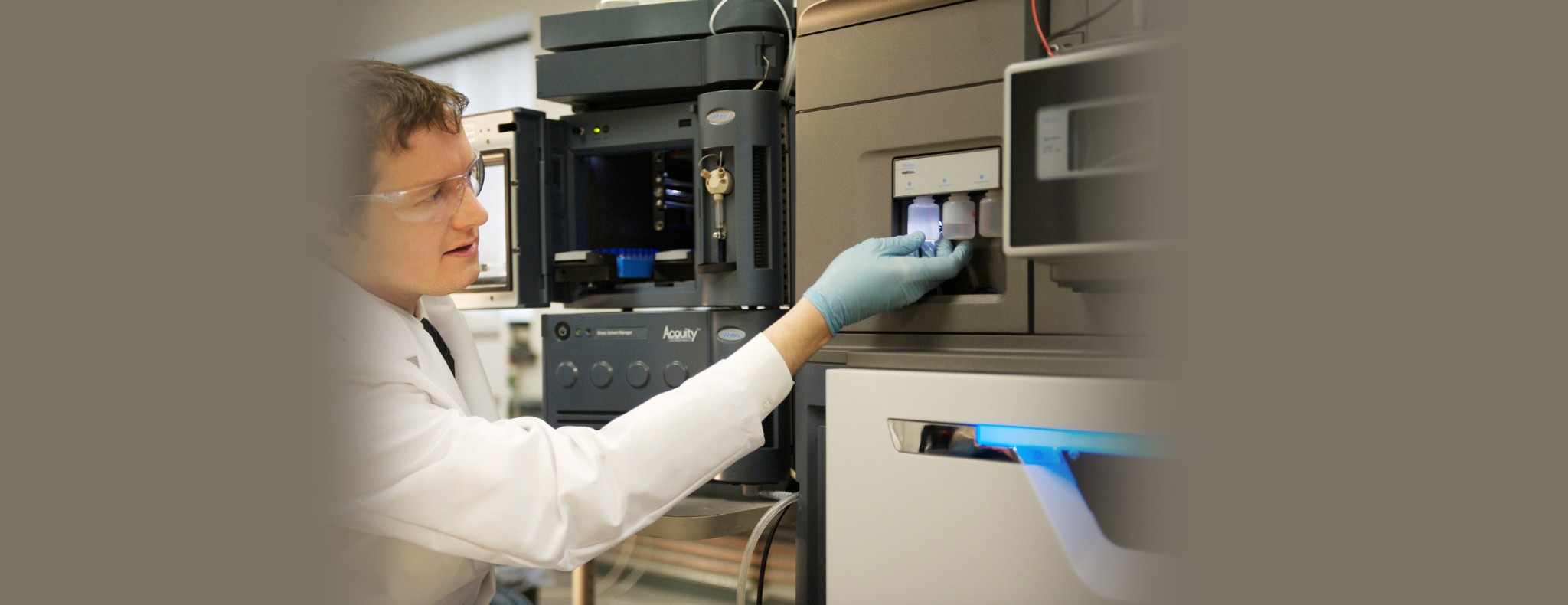Priming the seal-wash system is part of the system startup workflow on the touchscreen.
Prime the seal wash in the Alliance iS QSM to fill the tubing paths with solvent.
Tip: When primed, the seal-wash system is used to lubricate the plungers and flush away solvent and any precipitated salts that were dragged past the plunger seals from the high-pressure side of the piston chambers.
Prime the seal-wash system in all of the following situations:
- After using buffered mobile phase
- When the pump is inactive for a few hours or longer
- When the pump is dry
Warning: Observe Good Laboratory Practice (GLP) at all times, particularly when working with hazardous materials. Consult the Safety Data Sheets regarding the solvents you use. Additionally, consult the safety representative for your organization regarding its protocols for handling such materials.


Warning: To avoid personal contamination with biologically hazardous or toxic compounds, wear clean, chemical-resistant, powder-free gloves when performing this procedure.
Warning: To avoid eye injury, use eye protection when performing this procedure.
Note: To avoid damaging the seats and seals of solenoid valves in the solvent path, do not use a nonvolatile buffer as the seal wash solvent.
Note: To avoid clogging system tubing, ensure that the seal-wash solvent is compatible with the mobile phase conditions.
Note: To avoid contaminating system components, do not recycle seal wash.
Tip: The seal-wash system is self-priming. You cannot prime it with a syringe under normal plumbed conditions.
Recommendations:
- Use seal wash that is fully soluble with all chromatographic solvents and that contains at least 10% organic solvent. This concentration prevents microbial growth and ensures that the seal wash can solubilize the mobile phase.
- Before priming the seal-wash system, ensure that the volume of seal wash is adequate for priming.
- Titanium is subject to corrosion in anhydrous methanol, which you can avoid by adding a small amount of water (~3 %). Slight corrosion is possible when ammonia is >10 %. If using an Alliance iS Bio HPLC system, you can alternatively remove the titanium filter sinkers (the system loses its first line of protection from particulates) or replace them with stainless steel sinkers instead if your analysis is unaffected by biocompatibility considerations.
Required tools and materials
- Chemical-resistant, powder-free gloves
- Protective eyewear
- Seal wash solution
- Tubing adapter (startup kit)
To prime the seal wash system:
- Ensure that the seal wash inlet tubing is immersed in the wash solvent.
- On the touchscreen, tap HOME, tap the solvent bottle icon, tap the seal wash condition card, and then tap Prime Solvent to prime the seal wash.
Note: You can also prime the seal wash as part of the system startup process.
- On the touchscreen, tap .
- Follow the remaining on-screen prompts to finish the system startup process.


